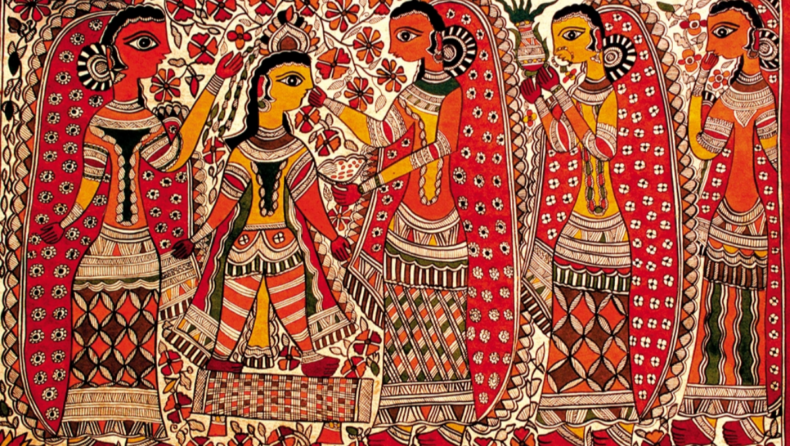Pushpa Kumari was ten years old when she made the life-changing choice to pursue Madhubani, a folk-art form passed down through the generations by female household members. Even though she inherited the art and the customs described in it, she never restricted herself to them.
She gave it her contemporary spin and modernized it to keep up with the times. If you search for Madhubani artists in Bihar, you would likely come across one every few kilometres, but only a few, such as Pushpa, have given it a modern twist while keeping the cultural spirit.
It’s no surprise that her painting technique drew the attention of the Public Art Fund, a non-profit organization based in the United States. She was one of 20 artists whose work is on exhibit in JCDecaux bus shelters in New York, Chicago, and Boston right now. She is the only Indian on the list, which is interesting.
“‘Global Positioning’ is a sort of art display that attempts to encourage optimism and empathy in the face of the pandemic.” ‘Joy of Living,’ one of my paintings, depicted disguised people attempting to be hopeful. On the bottom right, two women are dancing while holding hands. “And the umbrella with the injection as a handle reflects successful immunization campaigns all around the world,” she continues.
This isn’t the first time her work has been seen around the world. Her paintings have been shown in the Queensland Art Gallery Modern Art and the National Museums Liverpool, with their elaborate designs and modern commentary subjects. It has also visited countries such as Germany, France, and Australia.
The change-maker artwork
Pushpa, who is now in her 50s, has never shied away from expressing herself and putting her thoughts on canvas. The various worlds she depicts in each picture are seen through the eyes of several girls who grew up in rural locations.
“In the 1960s, my late grandmother, Maha Sundari Devi, was one of the first to move Madhubani paintings off the walls and onto paper. Many people praised her efforts to commercialize art to be fair to the artists’ hard work. Her services earned her the Padma Shri award. I had to live up to her heritage and bring something unique to the table when I entered the field. “Her illustrious past prompted me to investigate modern subjects in Madhubani, which is unusual,” adds the artist.
Pushpa, who hails from Ranti village in Madhubani district, has created a series of feminine paintings based on folk tales about menstruation, puberty, sexuality, and fertility. She paints tsunamis, earthquakes, demonetization, the pandemic, and other recent catastrophes that have occurred in India.
Some of her artworks are a social criticism debate. To depict dying art and occupations, she drew potters, metal fabricators, and her grandmother practised Madhubani in one painting.
To create the two Madhubani styles, she employs a combination of ink (kachni) and colours (bharni). While the former is mostly used to describe society and its difficulties, the latter is primarily used to show historical events, mythology, and folk stories.
Published By :- Tarsem Singh
Edited By :- Khushi Thakur













